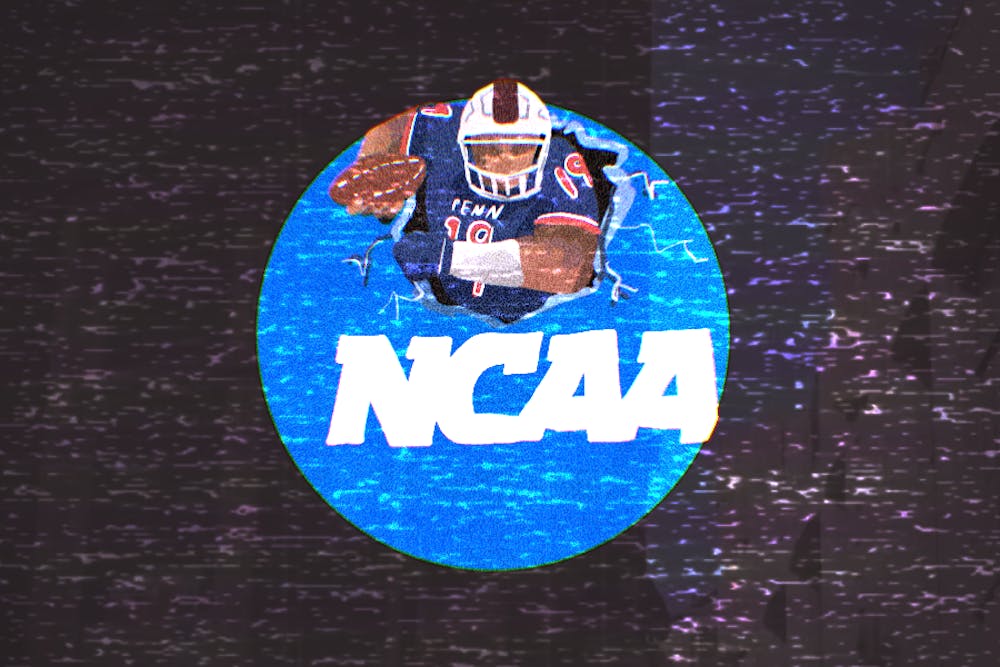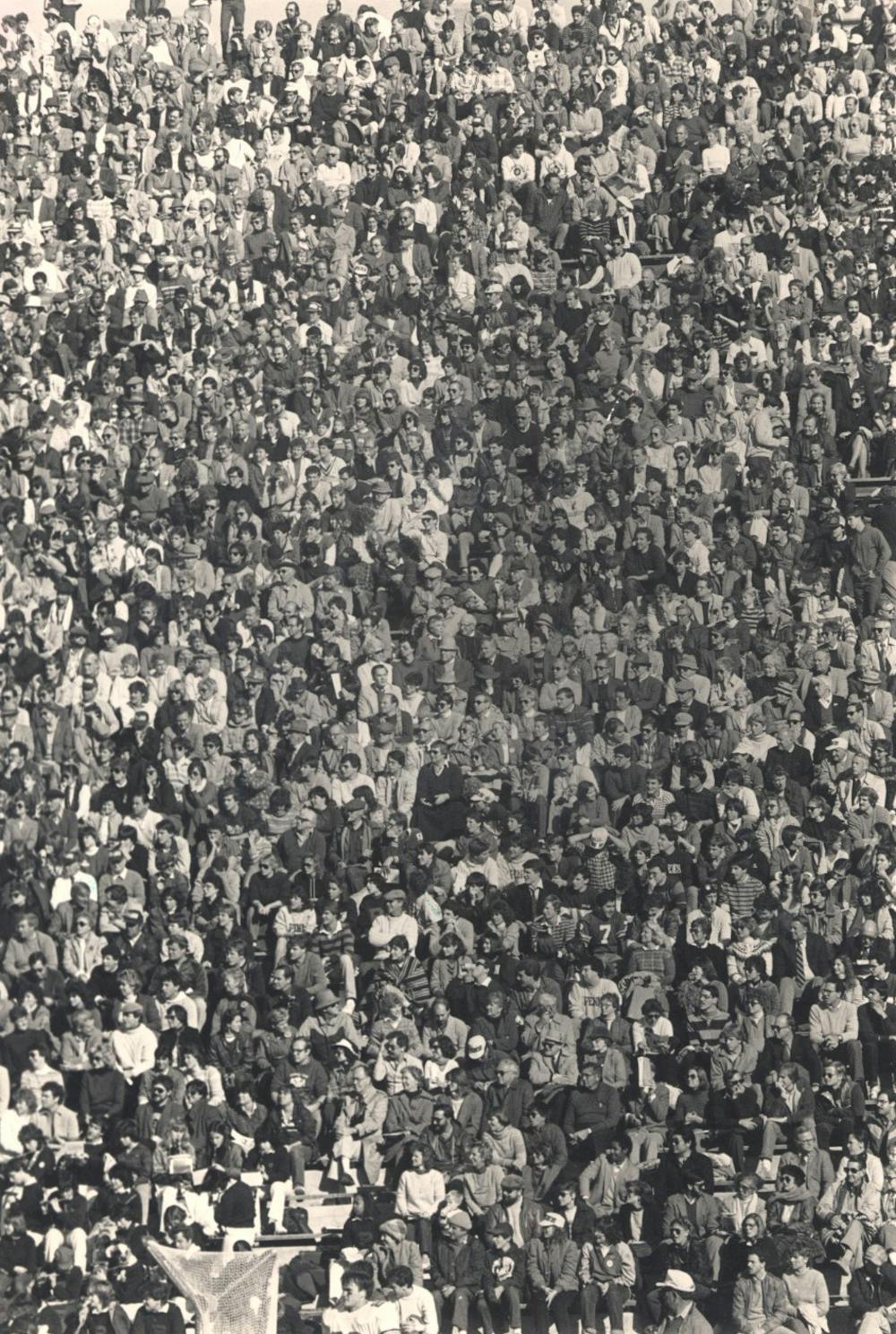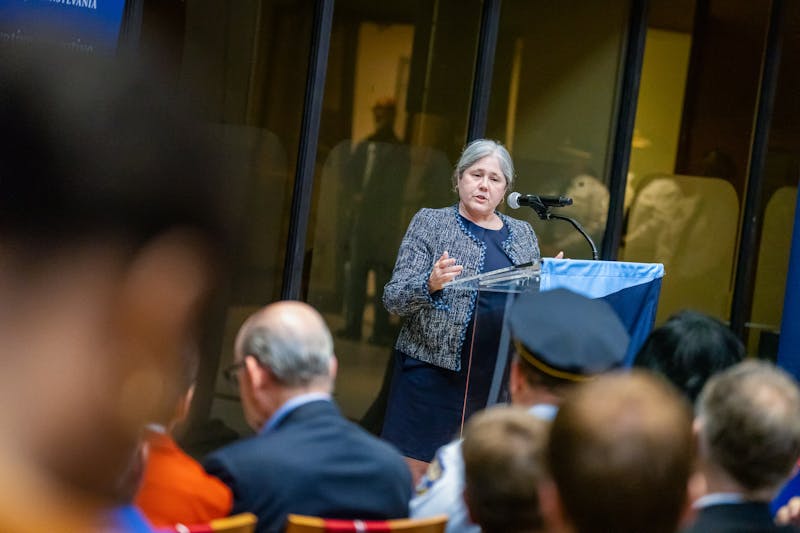
Televised college football is one of the hallmarks of fall Saturdays, and its existence was in large part due to Penn’s 1951 scuffle with the domineering NCAA.
In 1948, the University was in desperate need of bolstered revenue streams with there being an outstanding mortgage on the Palestra and Franklin Field of more than $1.6 million. Harold Stassen, the president of Penn at the time, believed that televising the Quakers’ home football games had the potential to solve these and other financial qualms.
So, in 1950, Penn sold the TV rights to all of its home games to ABC for $150,000, a figure which then Athletic Director Francis Murray thought could be doubled the very next year. At that point, only a small number of schools, such as the University of Notre Dame, had made such a move.
This effort, however, was swiftly rebuffed by the NCAA after a study published by the National Opinion Research Center was inconclusive but found enough evidence to say that televised college football had an adverse effect on the stadium attendance of the games.
The idea was that this problem threatened the survival of college football itself. The fear of losing out on in-game fans was enough incentive for the NCAA and the teams within it, most of which didn’t have the standing at the time to acquire a deal with ABC, to do something significant.
At the NCAA’s annual convention in 1951, which was located in Dallas that year, the delegates did just that. The vote was 161-7 — with 45 abstentions — to prohibit all live television broadcasts of college football games during the 1951 season.
“At its 1951 convention, the NCAA revoked its then existing policy allowing each individual institution complete control over the marketing of its athletic events, a first step toward prohibiting broadcasts into areas where another Association member was hosting a game,” John Siegfried and Molly Burba of Vanderbilt University wrote in their study, The college football association television broadcast cartel.
But shortly thereafter, the NCAA retreated because of public outcry, allowing one nationally televised game each week. Stassen and Murray, though, were still left in a precarious position. Their goal was to go directly to the networks and sell the rights to Penn’s games, and having the NCAA dictate what they could and couldn’t televise didn’t suit them.
In retaliation, for several months, Penn argued against the guidelines in NCAA meetings. After their rebuttals were to no avail, Stassen and Murray put their feet down, and on June 6, 1951, said that Penn would not comply with the rules dictating how it televise its games.

On top of their refusal to comply with the NCAA, Stassen and Murray re-upped their contract with ABC for an extra $50,000 to broadcast all Penn football home games during the 1951 season and to split revenues with Penn’s opponents. As a result, the NCAA deemed Penn a member not in good standing, which led to all of their opponents dropping out of playing against them.
Despite his fierce stance on the matter, Stassen realized the gravity of the situation. If he didn’t succumb to the NCAA’s demand, Penn would have no opponents and all revenue from the football program would evaporate. Stassen had until July 19 to either back out of the ABC deal or have Penn be suspended with the option of expulsion available to those voting at the next general meeting.
After attempts at compromising in some way, Stassen and Murray gave in on the day of the deadline to avoid Penn losing the revenue from the football program altogether. What started as a financially-motivated maneuver ended in a financially-motivated backtrack.
Stassen realized that he might have pushed the envelope a bit too far, but he still didn’t back down in his stance as he firmly believed the NCAA to be in violation of the Sherman Antitrust Act.
“The NCAA television control program is regarded by the University of Pennsylvania as illegal and unwise; hence we have not participated in it, and have opposed it,” Stassen wrote in 1953. “Our opposition has thus far been unsuccessful, but it is believed only a question of time before the centralized control scheme sponsored by the NCAA will be abrogated and all universities and colleges will enjoy the same rights and freedom in this respect that they do in other matters.”
Eventually, in 1984, Stassen was proven correct when the University of Oklahoma challenged the NCAA’s television guidelines in the U.S. Supreme Court and won. As time went on and the main source of college football revenue came from television, the NCAA, both by legal decree and by choice, asserted less autonomy over the universities and conferences.
Today, the broadcast rights to Penn football belong to ESPN, with the Ivy League signing a 10-year deal with the network and streaming platform in 2018. Furthermore, the price of TV rights for college football have skyrocketed, with recent deals being agreed upon for upwards of $400 million a year for high-end bowl games.
While Stassen might have been reckless in his attempt, his challenge of the NCAA’s television authority laid the groundwork for the college football landscape that exists today.
The Daily Pennsylvanian is an independent, student-run newspaper. Please consider making a donation to support the coverage that shapes the University. Your generosity ensures a future of strong journalism at Penn.
Donate






